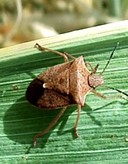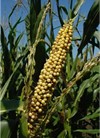Stink bugs feed by inserting their needle-like mouth-parts into plant tissues, injecting materials into the plant to aid in digestion, and sucking out plant juices. This feeding damages the plant physically, much like stabbing plant tissues repeatedly with a fine needle, leaving a tattered or shabby appearance. Feeding also damages plants chemically, because the materials injected by the insect are toxic to the plant. This damage is manifest as yellowing, twisting and stunting of leaves and stalks of corn seedlings (figure 1).
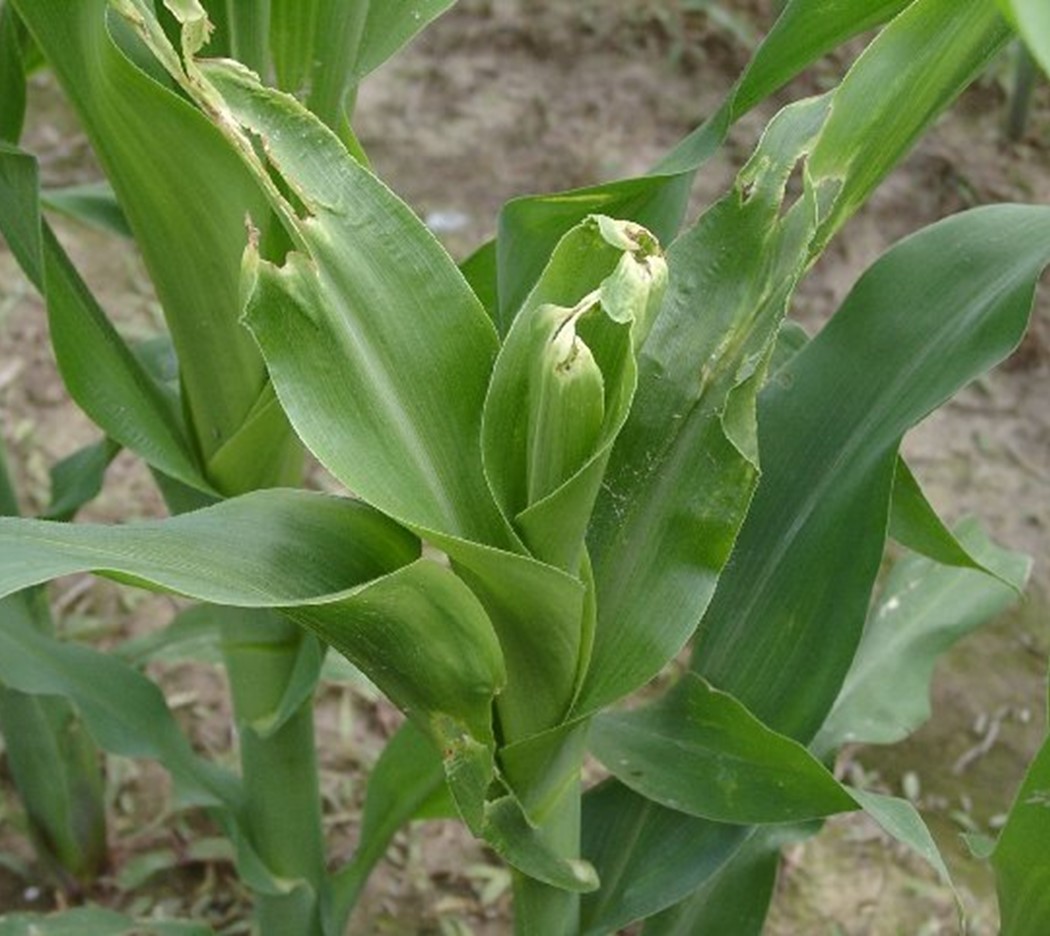
Figure 1. Brown stink bug damage to corn plant.
Injury due to stink bug feeding may range from moderate to severe to lethal, depending on the extent of infestation and which tissues are affected. Leaf and stalk feeding may result in modest or severe stunting, but damage to the growing point may kill the plant.
When growing point damage occurs, tillers or “suckers” may be produced from lateral meristems at the base of the plant.
There is typically a row of oval holes with yellow borders across the un-wrapped leaves of dam-aged plants. This row results from the single feeding puncture that penetrates the wrapped leaves. A slimy, decaying area may be found in the stalk where the stink bug has fed. This is most likely an effect of the insect’s digestive juices.
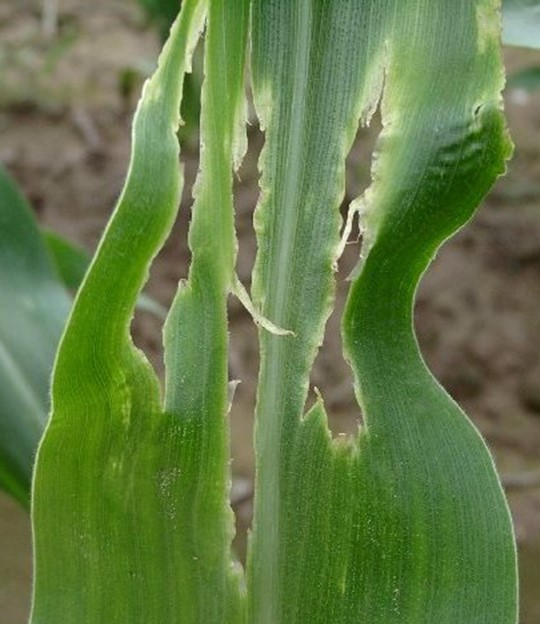
Tillering is the most dramatic symptom of damaged plants. Tillering usually first appears about 10 days after the damage was caused. A shoot or tillers begin to grow from the base of the plant and may become as large as the original plant.
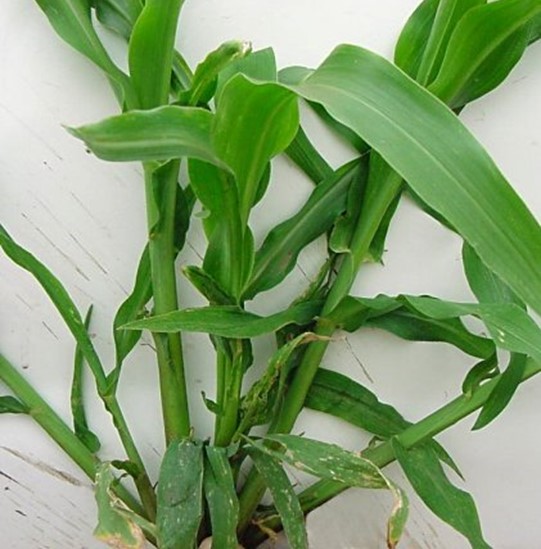
Damaged plants may develop misshapen ears on tillers in place of the tassel.
The primary corn ears can also be damaged by later feeding
of brown stink bugs. If a stink bug pierces into a developing ear it will typically be curved or bent from the point of feeding (figure 2).
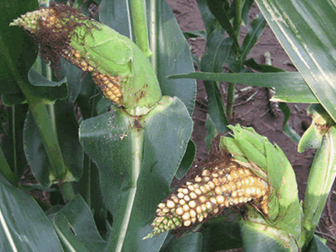
Figure 2. Corn ears are curved due to piercing of the developing ear by brown stink bug adults1.








